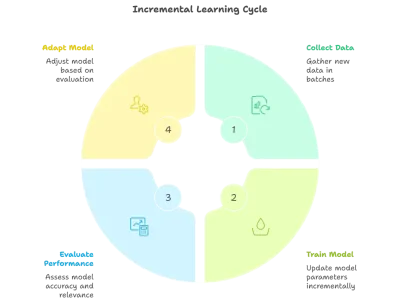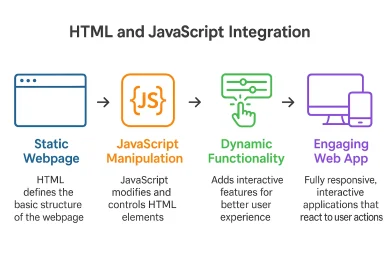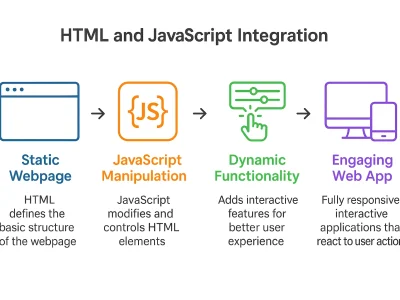Introduction
In this technological-driven era, location-based services (LBS) have become integral to several applications, including food delivery, social networking, ride-sharing, and navigation. Integrating geolocation (i.e. knowing where the user is) into MERN stack applications can remarkably enhance the user experience by offering personalized context-oriented features.
For instance, a person looking for restaurants near him/her can instantly find it through the application or an application that connects like-minded professionals in the same vicinity. This blog post acts as a practical guide to help you understand the integration of geolocation services in MERN applications. Through this blog, we will delve into the core concepts, necessary APIs, and detailed instructions to fortify you to develop location-aware applications that upgrade your user experience and your projects.
By the end of this blog, you will be able to leverage the dynamic nature of location data and develop engaging web experiences. Are you ready to explore with us? Don’t get lost- we will help you navigate through the world of geolocation.
What is Geolocation?
In layman’s terms, Geolocation refers to the ability to clearly define the geographical location of any person or device. It is the common underlying technology that forms a part of our everyday applications, i.e. from navigating places to ordering from the nearest pizza place. This location data is generally acquired by using a synergy of processes. The GPS (Global Positioning System), the most commonly used, uses a network of satellites to offer highly accurate geographical coordinates.
However, GPS isn’t handy, especially when indoors. In that case, other techniques come in handy. For instance, IP addresses, although less precise, offer a general location basis for the user’s internet connection. Further, Wi-fi triangulation analyses the strength of signals from nearby networks, which can further help refine the location data, especially in urban areas. In rare cases, cellular triangulation is also used. The accuracy of geolocation may vary basis the method deployed and surrounding environment.
This location data derivation process helps with several use cases, including but not limited to Interactive navigation maps, food delivery, real-time package, and ride tracking, customized recommendations for nearby restaurants, tourist places, shops, etc. In a nutshell, geolocation acts as the connector between the digital world and the real world to create tailored user experiences.
Integrating Geolocation in MERN Stack: Key Technologies and Benefits
Developing location-aware applications with the MERN stack provides a dynamic and flexible approach to web development. Each of the elements works in synergy to handle geolocation data.
Firstly, MongoDB, with its strong support for GeoJSON objects and geospatial (time-based data that is related to a specific location on the Earth’s surface) queries, offers an efficient way to store and retrieve location-based data, as may be required.
Secondly, Express.js acts as the cornerstone for backend API, thereby creating endpoints to tackle geolocation requests from the front end.
Further, these backend APIs can assess and process location data, establish communication with the MongoDB database, and even synergize with external geolocation services.
Thirdly, on the front end. React.js exploits its ability to display location-based information on the user interface. From displaying navigation maps and nearby travel places to memorizing real-time tracking information, React’s element-based ecosystem makes it the ideal choice for building user-rich experiences. Node.js, as the runtime environment, empowers the server-side operations, effectively handles connections to the database, and, most importantly, manages communication with any external geolocation APIs.
In collaboration, these technologies nurture an ecosystem for the implementation of location-oriented features in web applications. From storing and querying geospatial data in MongoDB to dynamic visualization with React.js, the MERN stack offers the right combination of tools.
Setting Up Your MERN Project for Geolocation Features
As discussed hereinabove, before the implementation of geolocation, a well-structured development framework is crucial for MERN stack projects. Generally, this includes setting up Node.js and npm (or yarn) for effectively managing reliance, configuring MongoDB for data storage, and lastly, setting up a React environment for the front end.
Primarily, for geolocation, we leverage several tools and libraries. A browser’s geolocation API provides access to the user’s location, although the accuracy and availability may fluctuate. For advanced mapping and visualization, integrating mapping services like Google Maps is highly recommended. These advanced services offer powerful APIs for displaying maps, routes and other location-oriented elements.
While on the backend, libraries like Geolib or specialized MongoDB drivers can assist with geospatial calculations and queries. Generally, the setting up of your project includes the installation of the above-mentioned dependencies, configuring API keys for mapping services, and designing the framework of the project in a manner to effectively manage both frontend and backend elements.
A strong development foundation forms the foundation upon which successful geolocation elements can be incorporated. A strong foundation allows the smooth integration of the tools and libraries, helping you to focus on the core functionality of your application development.
Core Features of Geolocation in MERN Applications
Implementation of Geolocation in MERN applications can help you unlock an array of dynamic features, including but not limited to:
- User Location: The primary feature, i.e. fetching of user location, leverages the browser’s geolocation AP to derive the users’ current location coordinates. This feature helps enable the location-aware functionality in web applications.
- Display of navigation maps: As the name denotes, the display of navigation maps is important for the visualization of data. Integration of advanced, interactive maps using libraries like Google Maps helps users explore their location and surrounding areas. This visual representation feature is critical for several other location-based features.
- Location-based Data Queries: This feature helps users to find out about the nearby places of interest. By using the user’s location and querying the backend, i.e. Express.js and MongoDB, we can derive and display appropriate sets of data such as nearby stores, restaurants, tourist places, etc. This feature is solely dependent on efficient geospatial queries within MongoDB.
- Real-Time Tracking: Lastly, real-time tracking adds another layer of modernity. Incorporation of real-time location updates, i.e. for navigation or food delivery, etc., requires consistent communication between the front and back end by using technologies like WebSockets.
These key features work in synergy to form the foundation for a wide array of location-based applications within the MERN stack application.
Best Practices for Geolocation in MERN Applications
Effective implementation of Geolocation includes not just functionality but also responsible development. Some of the best practices to be incorporated while developing web-based applications include:
- User Privacy: It is important to uphold the principles of data and user privacy while building these applications. Kindly request location permissions only when necessary, i.e. when the feature is being used. Provide a detailed explanation of why the application needs access to the users’ location to foster trust.
- Performance Optimization: Geolocation requests can become time-intensive. Use caching mechanisms to store location data temporarily, thereby mitigating the need for repeated requests and improving application performance. This is specifically crucial for repeatedly accessing location-based information.
- Rate Limiting: It is important to implement rate-limiting for your geolocation APIs to avert abuse and ensure the stability of your API keys. This feature helps restrict the number of requests any user or client can make within a pre-defined period to mitigate excess load on the server.
- Data Security: Incorporate appropriate security measures to uphold user privacy, including data encryption in transit and at rest and, most importantly, compliance with data privacy regulations. Lastly, store data for specific time frames only and anonymize it as feasible.
- Accuracy: It is important to understand that GPS may not always be readily available or accurate. Use a strategic combination of methods to enhance accuracy and address situations wherein GPS is unavailable.
- Testing and Debugging: Lastly, meticulously test your geolocation integration on varied devices and browsers. Use developer tools to forecast and analyze varied location scenarios and debug any issues that may arise. Pay careful attention to common issues such as network connectivity and unavailable location services.
Common Challenges in Geolocation Implementation
Although integration of geolocation in MERN applications is highly beneficial, it comes with its own set of challenges.
Firstly, User Content and Data Privacy are highly crucial. Managing user permissions, explanation of data usage, and handling denied access requires vigilance. Secondly, the Accuracy of location data is paramount for all devices and users.
However, it varies for all devices and locations. It is imperative for developers to carefully understand and account for potential inaccuracies and risks that may come with it and incorporate remedial mechanisms.
Thirdly, Performance is a crucial element, especially for real-time updates, consistently demanding efficient data handling and careful use of technologies like WebSockets. Lastly, the most crucial challenge that can be posed is Cross-browser compatibility. Different browsers synergize with geolocation APIs differently, requiring several rounds of testing and debugging (including browser-specific testing).
Meticulously forecasting and addressing these challenges is the key to scalable MERN stack applications.
Conclusion
We have navigated through the core concepts of geolocation in MERN applications, from fetching user location and displaying maps to handling location-based queries and, most importantly, real-time tracking. Users and developers need to understand that geolocation isn’t just another optional concept in web application development. Integration of geolocation is vital for creating engaging and personalized user experiences.
Can you imagine the scope of possibilities? Personalized recommendations, Dynamic map navigation, and fully interactive applications. Are you ready to build your geolocation-oriented application? Join our Full-Stack Development Course at affordable fees and learn how to create location-based applications with MERN Stack. Don’t just learn, build with us!
Did you find this blog post helpful? Learning also includes sharing! Share it within your network and bookmark it for your ready future reference. Happy Learning!





